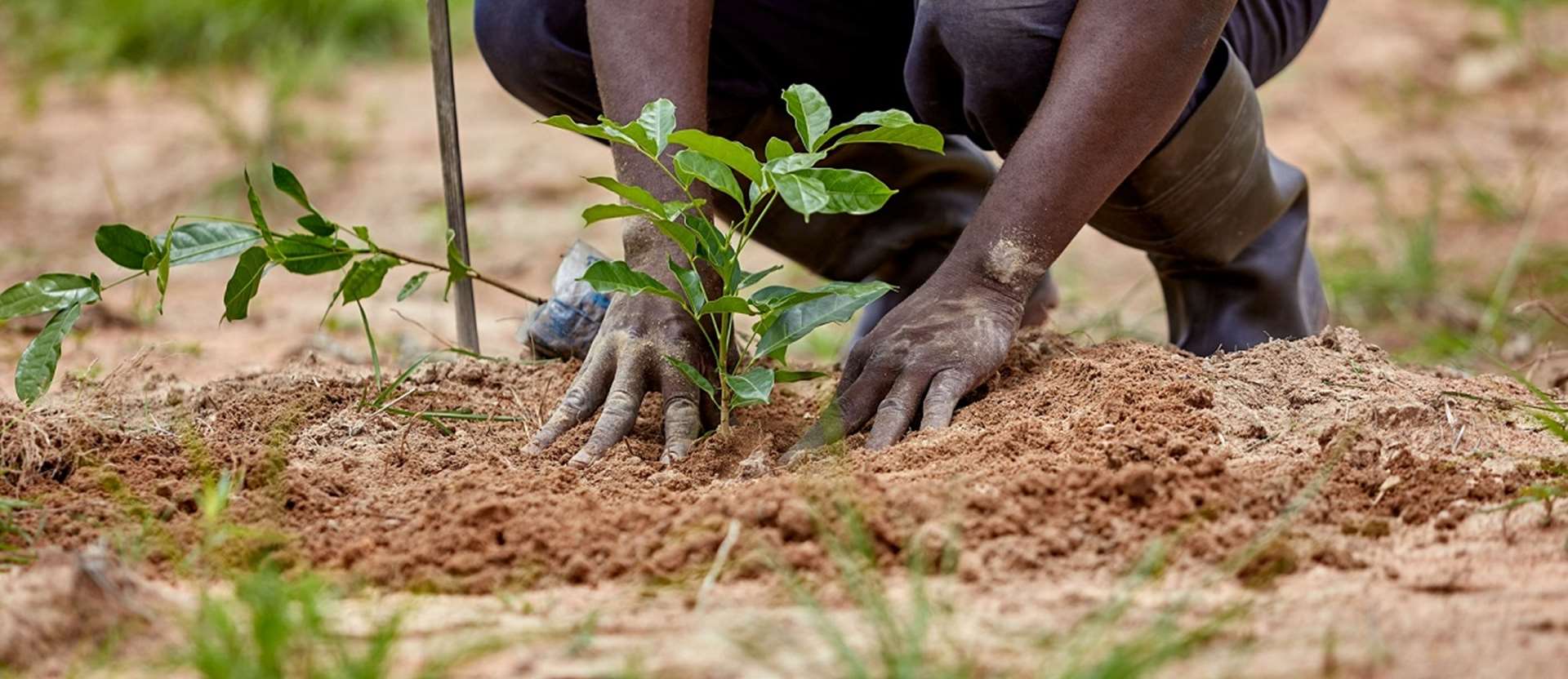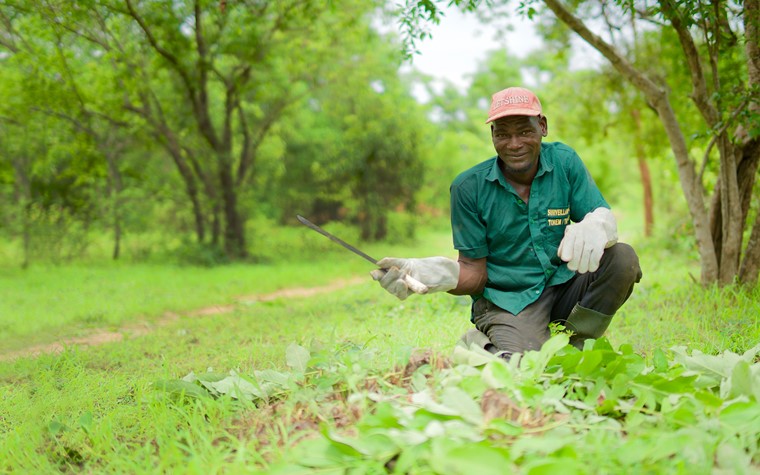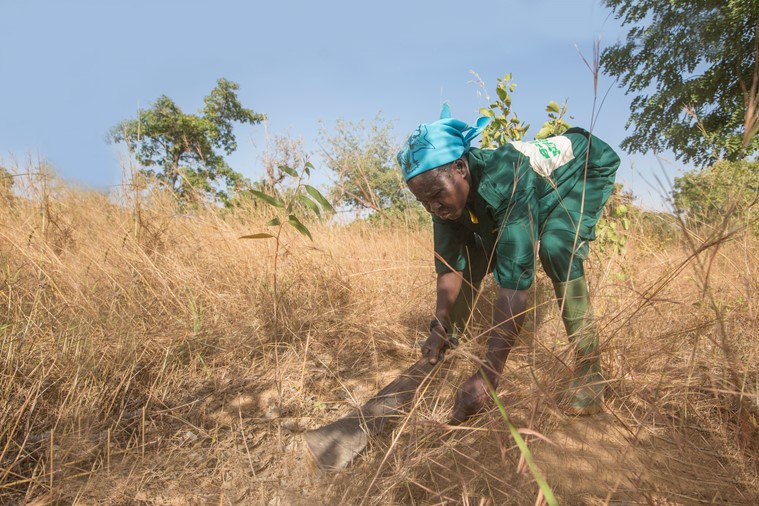
Greta Thunberg: we must do more than plant trees to tackle the effects of the climate crisis
31st January 2020In response to Greta Thunberg’s statement that planting trees is nowhere near enough of what is needed to tackle climate change, Tree Aid’s Chief Executive, Tom Skirrow, explains why we agree that planting trees in isolation is simply not enough.
When Greta Thunberg addressed the World Economic Forum in Davos last week, she was appealing against over simplified solutions to a complex problem. She argued that, for a truly global solution to climate change, a reduction in emissions and a weaning of the global economy from carbon is essential.
The point is valid – trees are a valuable weapon in the fight against climate change but their value as a low tech but highly effective carbon sink must not be seen as a panacea to address ambitious global carbon emission targets. Greta’s statement “planting trees is good, of course, but it’s nowhere near enough of what is needed” also made a deeper point. Planting trees – on its own – is simply not enough, even in the focused aim of utilising trees to build climate resilience.
At Tree Aid, we have grown over 22 million trees since our inception in 1987. But simply planting trees has always been considered “nowhere near enough” for us in addressing environmental and poverty issues across the drylands of Africa. Tree Aid's community-centred approach has always empowered those most affected by environmental degradation to find sustainable solutions to lift themselves out of poverty. Helping communities to restore their land by planting trees is a vital component– but it does not work in isolation.

The reality is complex and important questions need to be asked and addressed when growing trees. Namely: who is planting the tree, what kind of tree, what value will it provide, where will the tree be planted, who will own this tree, who will care for this tree until it begins to provide benefit and why would they do so and could planting this tree harm the surrounding environment? These are the questions that we have been using for over 30 years to form the Tree Aid approach.
Firstly, to ensure trees are the vital tool they have the potential to be in solving the climate crisis, systems and agreements need to be in place to manage them.This “forest governance” is essential to make sure communities have the tools at their disposal to protect forest resources. Ownership (be that individual or communal) is established, planting and management plans are put in place, rules are agreed to ensure each member of the community has roles and responsibilities as well as rights to the resource. The importance of this system of management, no matter where you are in the world, cannot be overstated – without this local ownership, forests wither and die under the competing pressures on land resources.
Secondly, skills in planting and managing trees have to be passed on to those who own and value the presence of those trees. The average forester in the UK has to complete a 3-year degree in order to effectively manage forest resources. We cannot expect this level of training for all those charged with cultivating tree resources but a bare minimum level of training and support is required to ensure communities are able to effectively protect and nurture their resource. It is paramount that in any planned tree planting project, at any scale, those managing the trees are given skills training and continually supported over the early period of forest restoration. These skills will help communities care for the trees but also give them a knowledge of what species are viable and beneficial in the given context and allow them to make informed decisions about the mix of any forest they are creating.

Finally, we have to ensure that the value a tree can bring is both global and local. The benefits of trees need to be realised at the community level for people to have a true incentive for reforestation efforts. The use of non-timber forest products – nuts, seeds, fruits – is an obvious and vital incentive for those protecting and nurturing trees. In order to benefit from this and support the forestry system being put in place, tree planting efforts need to work just as hard to maximise the benefits communities can garner from tree resources in order to ensure this symbiotic relationship can allow both humans and forests to prosper. Incorporating trees into a mosaic of landscapes – including across arable and pasturelands – rather than simply cordoning off space for trees and trees alone will further benefit this vital relationship. Demonstrating that trees have a role in soil fertility, erosion prevention, water retention, flood prevention and crop yields is essential to ensure the successful reconnection of communities and tree resources.
Planting a tree on its own is nowhere near enough to combat climate change or the extreme poverty faced by communities across the world but it is a valuable contribution to those efforts if done correctly and responsibly. While the world has started to recognise the potential power trees can have in our global landscapes and ambitious targets are being rightly set out, our focus collectively needs to be on tree planting and forest management that can result in maximising impact and sustainability. Without a coherent and community-based approach, both the survival of the trees and the global ecosystem are in peril.



